Blue Oat Grass
Blue oat grass is a graceful, arching ornamental grass with bluish-gray leaves. The thin, spiky leaf blades form a porcupine-like clump. Blue oat grass is similar in shape and color to the ornamental blue fescues, except larger.
After flowering at the end of May into June, the tan seedheads are quite attractive throughout the summer, creating an arching fountain form. In the Pikes Peak area, this highly adaptable and decorative grass is a good choice for protected areas that receive regular moisture.
.jpg)
.jpg)
.jpg)
.jpg)
.jpg)
Blue Oat Grass
Blue oat grass is a graceful, arching ornamental grass with bluish-gray leaves. The thin, spiky leaf blades form a porcupine-like clump. Blue oat grass is similar in shape and color to the ornamental blue fescues, except larger.
After flowering at the end of May into June, the tan seedheads are quite attractive throughout the summer, creating an arching fountain form. In the Pikes Peak area, this highly adaptable and decorative grass is a good choice for protected areas that receive regular moisture.
Plant details
Botanic Name
Helictotrichon sempervirens
Pronunciation
hel-lik-toh-TRY-kon sem-per-VY-renz
Mature Height
2 to 4 ft.
Mature Spread
2 to 4 ft.
Water usage
One Droplet: Water twice per month or less, once established.
Two Droplets: Water about once per week, once established.
Three Droplets: Water about twice per week, once established.
Flower Color
tan
Bloom time
end of May to June
Colorado Native
No
Natural Habitat
Europe
Light Requirements
sun, part shade
Cold Hardiness
USDA zones 4-9
Elevation Limit
hardy to 8,500 ft.
Performance
At the Water Wise Demonstration Garden and throughout the Colorado Springs area, blue oat grass is a hardy ornamental grass, best adapted to protected sites with regular moisture. It has not performed well when planted in large masses in commercial landscapes.
Flowers are abundant and showy, and the dried grass blades left on the plants for winter interest are quite attractive.
It is important to protect newly transplanted plants from rabbits, since they love to eat this grass when it is young.
Maintenance
Blue oat grass greens up very early in spring. In order to remove the dead growth, cut to ground level at the beginning of January.
See in a landscape
The parkway in this downtown neighborhood was a great candidate for a conversion to xeriscape from turf. Parkways like this can be difficult to water because of the narrow width, and are a great place to start with xeriscape. This parkway features a small ornamental tree and flowering perennials, ornamental grasses and delicate groundcovers. The middle of the parkway has a stone pathway which accommodates the foot traffic to and from the street. Most of the plants in this parkway should be cut back in the spring and the parkway should be mulched to help the soil retain moisture and curtail weed growth.
Xeriscape is a great opportunity to showcase plants with different colors and textures. This yard uses ornamental trees, evergreen shrubs, striking ornamental grasses and a native grass lawn to breathe life into a yard that used to be all Kentucky bluegrass. The parkway strip is home to the existing juniper that has been partnered with large maiden grasses and a pathway which accommodates foot traffic from the street parking. A native grass turf covers about half of the remaining yard with planting beds around the perimeter that feature low water perennials, grasses and groundcovers.
Shrubs and grasses can be a great way to landscape for lower maintenance and water savings. Evergreen shrubs in particular need little to no maintenance, and ornamental grasses need to be cut to the ground only once in early spring. This home features shrubs, grasses and a few flowering perennials to add a pop of color to this small front yard. Not only are these plants low maintenance, but they have great fall color and structure during the winter. Because drip irrigation and mulch are used, weeds are less of a problem and this yard may be enjoyed with less weed pulling.
This downtown parkway adds beauty to this large parkway with a garden of xeric perennials and a young shade tree. Since the median is wide, there was room enough for a garden as well as a flagstone pathway that creates more space for pedestrians and parking traffic.
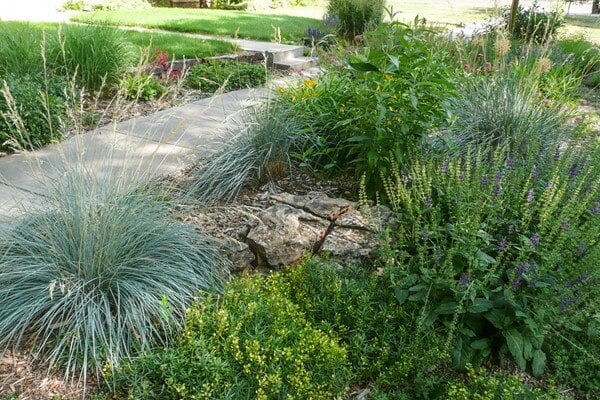
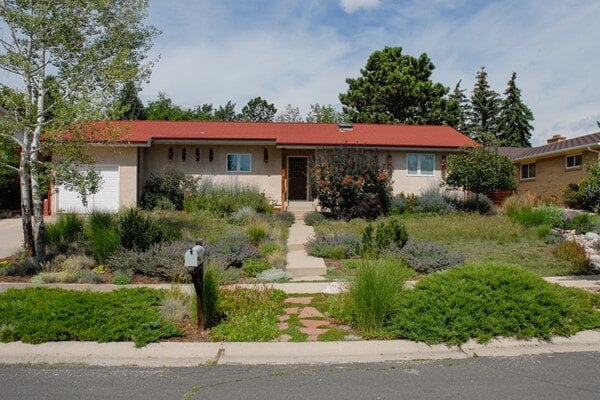
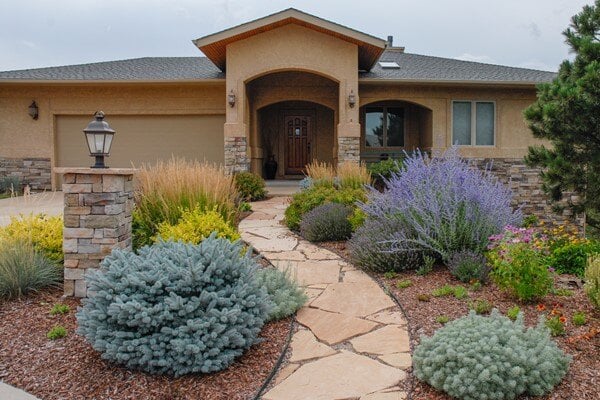
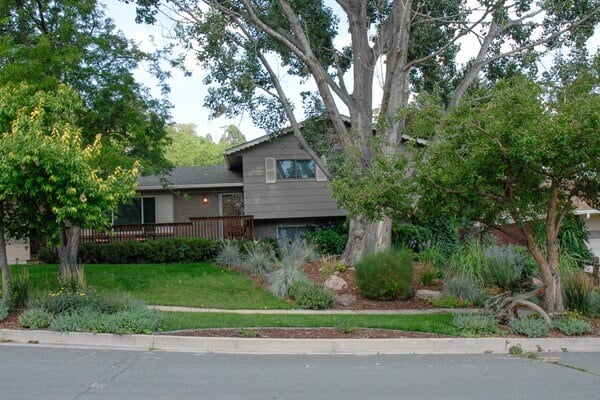
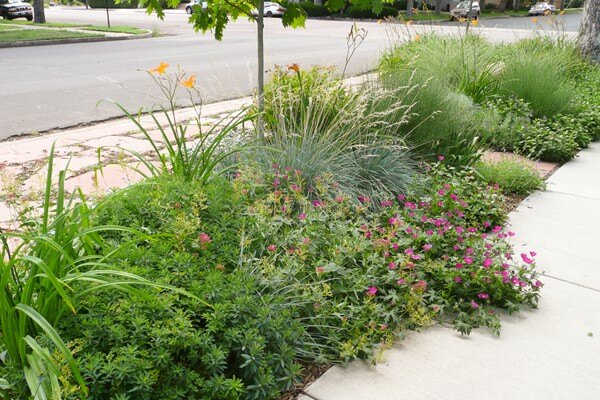
.jpeg)
.jpeg)
.jpeg)
.jpeg)
.jpeg)
.jpeg)
.jpeg)
.jpeg)
.jpeg)
.jpeg)